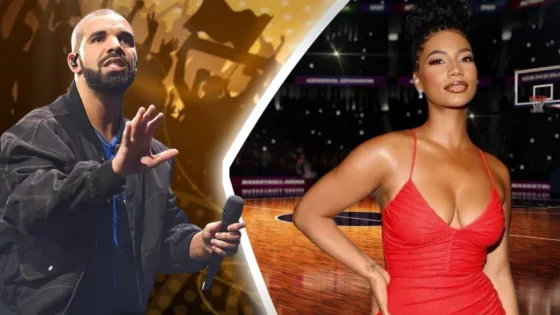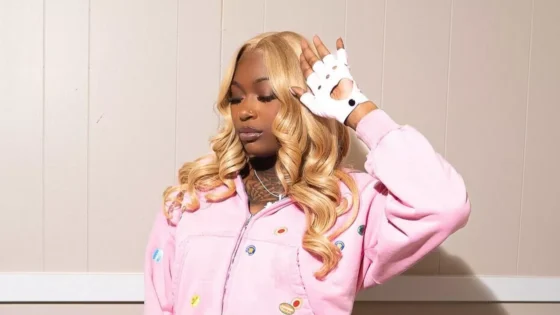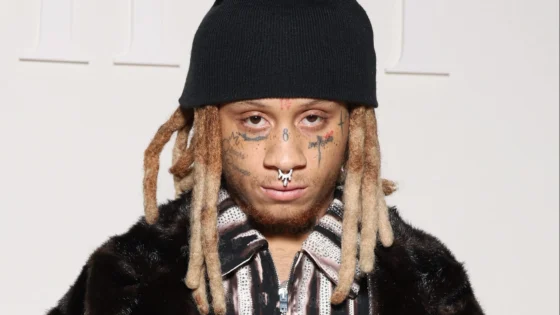There are certain elements of Dracula, or as it was titled in America, Horror of Dracula, which probably garner ironic laughter at revival screenings. Perhaps the most likely candidate is Arthur Holmwood’s reaction when his newly-vampiric sister, Lucy, is killed by Peter Cushing’s gentlemanly Dr. Van Helsing. Holmwood (Michael Gough) clutches his chest and looks confused. He hugs the wall — strangely, as if the actor has never experienced pain or grief before. It’s overly theatrical, the kind of curious anachronism that one might expect from a sixty year-old British gothic horror film (skip to 2:19 for the good stuff):
But look at Van Helsing’s work with the stake itself: the shot’s framing, which zeroes in on a piece of wood and a scrap of fabric, blunts the grotesquerie of the act, but the affair is surprisingly unflinching. We see the stake, we see Lucy’s agony, we see bright, technicolor blood, and most notably, we are assaulted by the thwack! of Van Helsing’s hammer as it drives home the momentousness of the event. Dracula is full of such contradiction as the anxious atmosphere and unsettling imagery rub up against lavish set design, lush costumes, and theatrical staging.
Unmistakably, Dracula is a treasure which is far from lost, and were it not perfectly fitting for Halloween, the film may not have made it onto the Filmstruck Cram list if only because it is, essentially, iconic. Hammer Film Productions had been in business for nearly twenty-five years before Dracula, but had been in the business of horror for a shorter time period, working in the realm of sci-fi before striking gold by adapting horror stories from the public domain — the first being the blockbusting performance of The Curse of Frankenstein. One year later with the release of Dracula, Hammer was well on its way to a dynastic run of gothic horrors — yet among its estimable success, Dracula still stands out as one high point, if not the company’s apex.
Ironically, given the overwhelming success of Frankenstein, Dracula was a knotty production due to a complicated copyright situation with America’s Universal and the script’s lurid subject matter. Reviewing Dracula for the British Board of Film Classification, examiner Audrey Field remarked, “The curse of this thing is the Technicolor blood: why need vampires be messier eaters than anyone else? Certainly strong cautions will be necessary on shots of blood. And of course, some of the stake-work is prohibitive.”
“And of course, some of the stake-work is prohibitive.” Not overly prohibitive it seems, as much of Van Helsing’s grim work with a stake and hammer in Horror of Dracula is, while hardly gratuitous by today’s standards, blunt. As for the dental hygiene and table manners of vampires? Were they not messy eaters, as Field noted, Dracula would be robbed of a truly iconic shot when a wild-eyed, feral Count Dracula (Christopher Lee) is first revealed in the film.

What Field must not have understood is the essential role the vibrant blood in the film plays, emphasizing the uncontrollable, obsessive animalism that characterizes Dracula and his undead victims. At one point, an observant and sympathetic Van Helsing compares vampires to drug addicts — self-loathing, perhaps, but single-minded in their pursuit of brief satiation. Christopher Lee’s legendary performance as Dracula (the man would go on to play the thirsty Count nine more times), underlines Van Helsing’s sentiment, and differentiates between controlled evil and inhuman malevolence. Dracula is the latter — not necessarily tragic, but resigned to survive by preying on others, consumed by his condition.
Alongside Lee’s unforgettable Dracula, Cushing plays a controlled, debonair Van Helsing. He’s stoic and competent, providing a trustworthy counterbalance to Dracula’s frantic energy toward the film’s end (it’s little surprise that these two actors, who in Dracula appear to calibrate their performances with each other in mind, comprised the core of Hammer’s informal repertory company). Cushing, Lee, and the rest of the cast are outfitted impeccably, with each character’s costumes revealing specific facets of their nature. Van Helsing’s cloaks and suits, for instance, are elegant, understated, and masculine; he appears every bit a person who considers both function and form in his appearance. Lucy, when we first meet her, is the embodiment of innocence in pigtails and a nightgown; once she becomes a vampire, she looks ethereal in a flowing white gown and unkempt hair. Which is all say that this film feels like a relic at times to be sure, but it is well-observed, and contains enough contemporary flourishes to maintain a sense of freshness — especially when compared to the plodding, dour tone of much of modern horror.
Elements of Horror of Dracula are stagy, and others are low-key; it is at times staid, and at others silly. There is sexual subtext galore between Dracula and his victims, and the film empathetically frames vampirism with regard to both addiction and illness. In addition to all that, Horror of Dracula, with its twisting plot and unforgettable villain, is consistently fun.
For more Filmstruck Cram, click here.

































